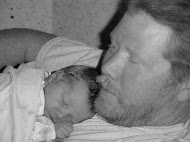Nightmares
A nightmare is a dream which causes a strong unpleasant emotional response from the sleeper, typically fear or horror, being in situations of extreme danger, or the sensations of pain, bad events, falling, drowning or death. Such dreams can be related to physical causes such as a high fever, turned faced down on a pillow during sleep (most often in the case of drowning nightmares), or psychological ones such as psychological trauma or stress in the sleeper's life. Nightmares can also have no apparent cause. If a person has experienced a psychologically traumatic situation in life—for example, a person who may have been captured and tortured—the experience may come back to haunt them in their nightmares. Sleepers may waken in a state of distress and be unable to get back to sleep for some time. Eating before bed, which triggers an increase in the body's metabolism and brain activity, is another potential stimulus for nightmares
Children, especially, are prone to nightmares. Nightmares are common in children, typically beginning at around age 3 and occurring up to age 7-8. People with anxiety disorder might also experience what experts term “night terrors”. These are actually panic attacks that occur in sleep. It is especially difficult to remember these types of dreams since they conjure up terrifying images that we would just as soon forget.
In poetic myth, the Nightmare is actually a “small nettlesome mare, not more than thirteen hands high, of the breed familiar with the Elgin marbles: cream-colored, clean-limbed, with a long head, bluish eyes, flowing mane and tail.” She builds nests, called mares’ nests, and “when one comes across them in dreams, lodged in rock-clefs or the branches of enormous hollow yews, are built of carefully chosen twigs lined with white horse-hair and the plumage of prophetic birds and littered with the jaw-bones and entrails of poets.”
Thus, in a pagan world of myth and blood sacrifice, the Nightmare was a cruel, fearful creature. Our modern word nightmare derives from the Middle English nihtmare (from niht, night, and mare, demon), an evil spirit believed to haunt and suffocate sleeping people. And so, in today’s world, when we speak of a nightmare we mean a frightening dream accompanied by a sensation of oppression and helplessness. The blood-thirsty aspect of the mythic Nightmare, however, can give a good clue about nightmares in general, for in psychodynamic terms nightmares are graphic depictions of raw, primitive emotions such as aggression and rage that have not been incorporated into the conscious psyche. Thus we tend to encounter these “ugly” aspects of our unconscious lives as terrifying dream images in whose presence we feel completely helpless.
Nightmares are quite common in childhood because this is a time of our emotional development when we all have to come to terms with, well, raw, primitive emotions such as aggression and rage.
Traumatic nightmares can also occur as one of the many symptoms of posttraumatic stress disorder (PTSD). Repetitive, intrusive nightmares following a trauma often contain symbolic themes that mirror the original trauma and relate to threat to life, threat of abandonment or death, or loss of identity. Therefore, traumatic nightmares need to be treated differently than other dreams. It’s not enough just to “know” intellectually the psychological reasons why you have these nightmares. An event is traumatic because it disrupts your previously secure—and illusory—sense of “self.” And so, to heal from a trauma, you must take the initiative to make conscious changes in your life to accommodate the traumatic shattering of your illusions about life and identity.
Some believe that nightmares have a physiological nature as well. Edgar Cayce believed that Nightmares, which bring with them an inability to move or cry out, usually indicate the wrong diet. To end the nightmarish dreams change your diet. Occasional nightmares are commonplace, but recurrent nightmares can interfere with sleep and may cause people to seek medical help
We found a technique online that can help people who suffer from recurrent nightmares. It is not meant to be a cure-all. It is just a suggested treatment to deal with frightening nightmares. The idea is to use this therapy every night until the nightmare has been resolved. It is called Imagery Rehearsal Therapy.
Here are the steps of Imagery Rehearsal Therapy:
Write out the text of the nightmare. Tell the story, no matter how frightening, in as much detail as you can remember. Create a new ending for the nightmare story and write it out. Be careful, however, to make the new ending peaceful. Remember that the nightmare is grounded in emotions such as raw anger that have been provoked by a trauma. The point of a new ending is to “tame” the emotions, not merely vent them in violence and revenge.
Rehearse the new version of the story in your imagination each night just before going to sleep. Do this as close as possible to your falling asleep without any other activity between the rehearsal and sleep. Perform a relaxation exercise. Do this immediately after the rehearsal, as a way to fall asleep peacefully. You may use any technique with which you are familiar. This could be meditation, yoga, or breathing exercises.
Taken in part from How to Interpret Your Dreams
Also contains information from Wikipedia
Disclaimer: No one involved in this blog or its contents may be held responsible for any adverse reactions arising from following any of the instructions / recipes on this list. It is the reader's personal responsibility to exercise all precautions and use his or her own discretion if following any instructions or advice from this blog















No comments:
Post a Comment